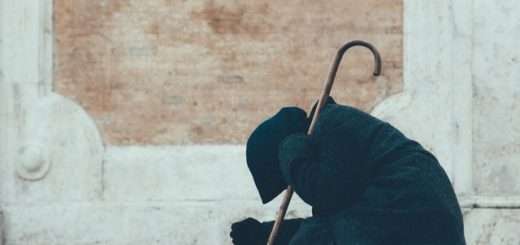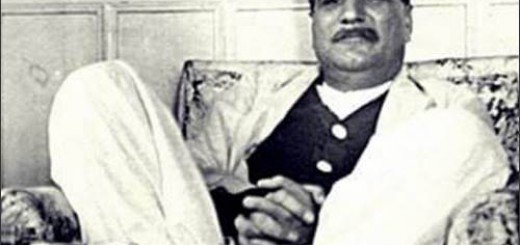Where did Pakistan go wrong? by L. Mohan
The appreciation that the US President showered on the Indian democracy during his recent visit contrasted sharply with the cold stares he had reserved for the rulers of Pakistan. By all surface indicators it should have been the other way around. It is India that has all the ingredients that would make a democracy unworkable. A billion people, vast cultural and religious diversity, 18 official’ languages, poverty ‘almost everything that could tear the political fabric apart. Yet it has, but for a minor aberration in 1975, survived as a vibrant democracy for 50 years.
Pakistan, on the other hand, started with none of these disadvantages. It has basically one religion. (Hindu India’, in contrast, has more Muslims than Pakistan). One official language ‘Urdu ‘is accepted by everyone. And the ethnic diversity is far less acute. A top secret’ analysis made by the British Commonwealth Relations Office, shortly after the two nations became independent, stated that Pakistan œhas a definite background, Islam, on which to build a nation and to unite the people¦and has less to fear from internal disruptive forces than the government of India.
Economically Pakistan seemed to have everything going for it. Over 65 percent of the people are Punjabis. These are the people who, on the other side of the border are spearheading the country’s economic growth. But in India they constitute only 2.4 percent of the population. Imagine where India would be if Punjabis formed the country’s majority, and it was not weighed down by the overwhelming poverty of the large states in its heartland. Despite these drawbacks India is perceived today as a country with stable growth and healthy hard currency reserves. And it is Pakistan that is fast going down the economic drain.
Strife, instability and economic decline ‘how did Pakistan ever get into this mess? The fault probably lies in the sentiments that underscored the creation of Pakistan ‘intolerance and hate. They hated the Hindus and opted out of India. They were intolerant of the Ahmadiyas and drove them out of the Muslim fold. They could not stand the Bengalis, ill-treated them and forced them to secede. In the 1970s the Baluchis were subjected to a genocide merely because they wanted to preserve their rights, and identity.
The Sunnis and the Shias hate each other and murder is the common currency between them. In Karachi, the locals and the Muhajirs (who were enticed to migrate to the Islamic paradise) go about killing each other without stopping for breath.
The army hates the civilians and, every now and then, topples elected governments. And minorities like Christians and Hindus, miniscule as they are in numbers, are the pet subject of everybody else’s violent aversion. It is difficult to find in Pakistan any two communities that are willing to tolerate each other.
Mohammed Ali Jinnah, himself wondered at times whether he had done the right thing in creating a separate Muslim nation. In a speech given to the Pakistan Constituent Assembly he said, œYou may belong to any religion or creed or caste ‘that has nothing to do with the business of the state. I think that we should keep that in the front as our ideal and you will find that in the course of time Hindus will cease to be Hindus and Muslims would cease to be Muslims, not in the religious sense, because that is the personal faith of each individual, but in the political sense as citizens of the state.
This portion of the speech was buried with the founder. But in a recent book the Pakistani author, Mohammed Anwar Khan, does ask: what sort of an Islamic nation did Jinnah create when half of the sub-continent’s Muslims were left outside it.
Those left out include, today, hundreds of thousands of Bihari’ Muslims stranded in Bangladesh after Pakistan was forced to quit in 1971. They are not Bengalis, but had opted for Pakistan, and had migrated to what was then its eastern wing, when India was partitioned. They would now like to be repatriated to what they considered is their chosen land. But the Nation of Islam’ cannot tolerate them, and therefore will not have them.
The contrast in the manner in which the two sub-continental neighbours have dealt with the diversities within their nations has been described by Indian journalist, M J Akbar, in India: The Siege Within. “All that the Bengalis of Pakistan wanted, he says, “was respect and equality. Instead they got a country”. What the Tamils of the South Indian state of Madras wanted was a country; they were content to settle for respect and democracy.
What the rulers of Pakistan forget is that tolerance of different viewpoints is the sine qua non of a democratic polity. Somewhere in the maelstrom of the electoral debate the differences get cancelled out, the anger and acrimony finds an escape and a consensus emerges to take the country forward. Confined in his death cell, it was Zulfiqar Ali Bhutto who wrote in his last testament, œIf India had suffered from martial laws and dictatorships on the pattern of Pakistan, India would have been in three or four pieces by this day. India is more heterogeneous than Pakistan, but India has been kept in one piece by the noise and confusion of her democracy. The men in khaki who control Pakistan today may have had no love lost for Z A Bhutto, but this is one observation of his they would do well to remember.
In a democracy you don’t hang your opponents or imprison them or create conditions where they are afraid to return home, without the authority of a fair judicial process. Pakistan’s leaders have, unfortunately, all been products of a society in which temperance and tolerance have always been in short supply. Religious fundamentalism and political coercion are the very antithesis of a liberal democracy. You cannot have them all. The people of Pakistan have to make a choice.













